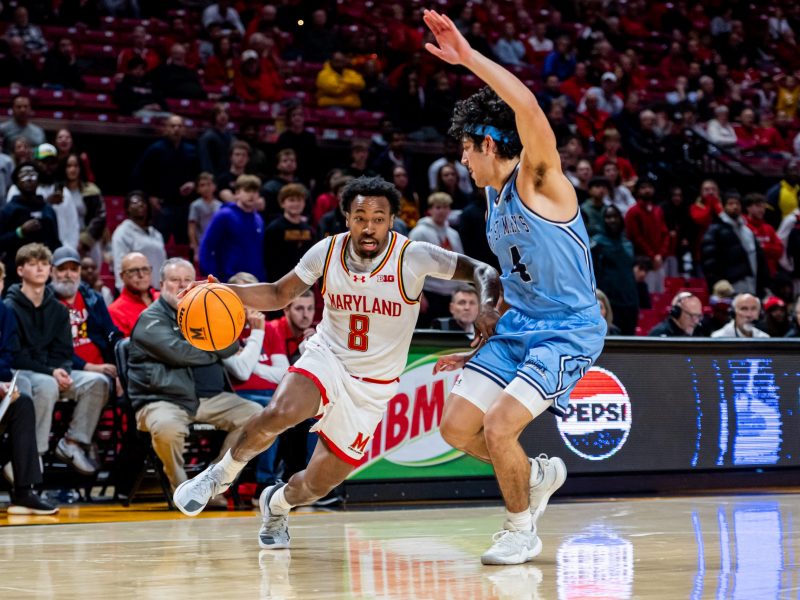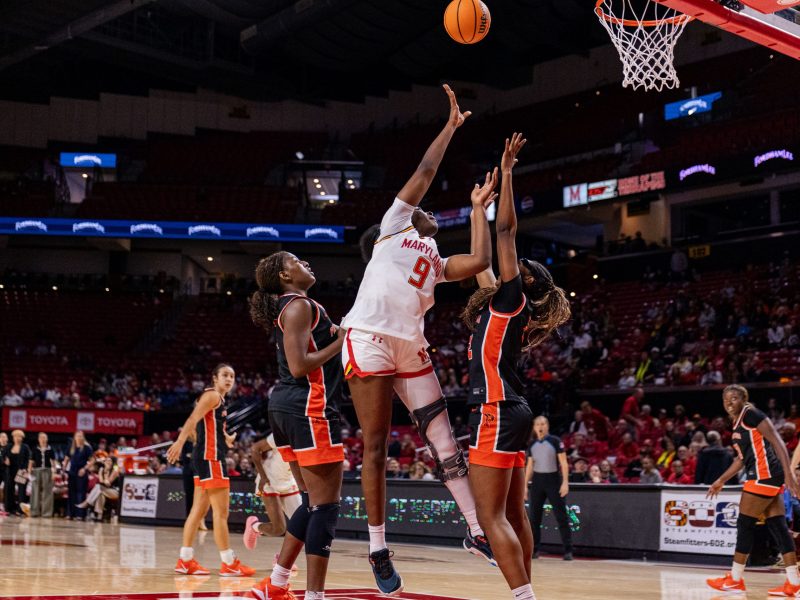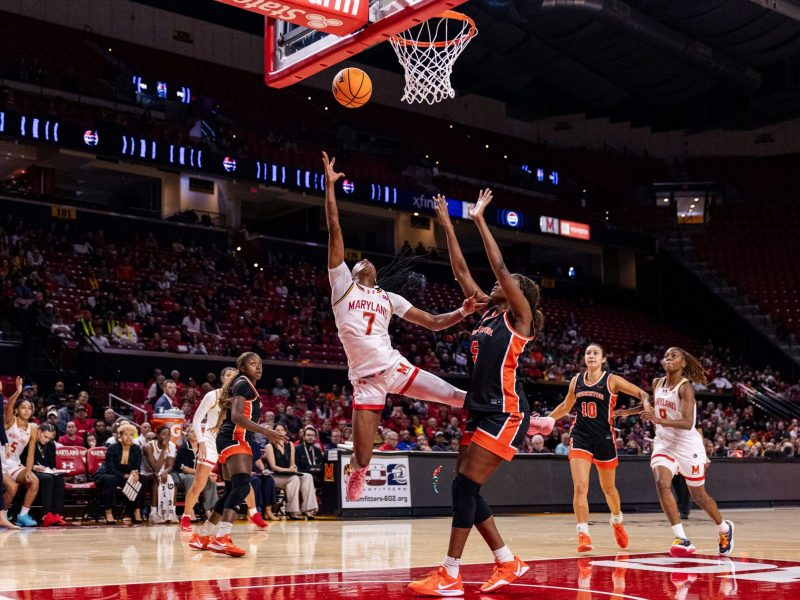Maryland women’s basketball lost its sole road game this season on Jan. 23 at Ohio State, coming in its worst stretch of the year as the second of three consecutive ranked losses.
No. 15 Maryland didn’t account for the Buckeyes’ physicality and staunch full-court press defense. But the Terps combatted those issues in the home rematch on Sunday, downing No. 13 Ohio State on a Sarah Te-Biasu overtime game-winning floater.
“For us, it was personal,” junior guard Kaylene Smikle said. “We [knew] when they came in here, we had to play harder than them.”
The Terps entered halftime of the Jan. 23 contest with a seven point lead despite senior guard Shyanne Sellers missing the game with a knee sprain. They limited the Buckeyes to 8-for-35 shooting in the first half and outrebounded them by 13.
Then came an Ohio State run.
The Buckeyes finished the third quarter with a 15-0 scoring blitz over a three and a half minute span. They methodically overcame the deficit and grew a lead as much as 11 points just more than halfway through the fourth frame.
[Maryland women’s basketball jumps four spots to No. 15 in newest AP poll]
Coach Brenda Frese said after the game she hoped Maryland would have a healthy roster in the second meeting. While redshirt junior guard Saylor Poffenbarger missed the rematch, Sellers was available.
After the Terps entered the break on Sunday down a point, a pair of back-to-back second chance free throws from senior forward Christina Dalce gave them a slim lead shortly into the third quarter. Maryland faltered in a similar spot in January.
Strong pressure defense from the Buckeyes forced five third quarter turnovers in the first matchup. The Terps converted only one field goal during the period’s final five and a half minutes despite their limited possessions.
Two of the five takeaways came in an eight second stretch on Jan. 23. Maryland failed to move the ball past the half court line on back-to-back possessions — with Poffenbarger and Smikle, respectively, launching two mistimed passes that Ohio State stole.
“They decided to ramp up their physicality,” Frese said after the January loss. “It got a lot more physical and we didn’t handle it.”
Maryland handled the press in Sunday’s rematch. While Ohio State found initial defensive success through the first few frames, the Terps found ways to control the game’s pace down the stretch.
Fast transition play proved increasingly effective — the Terps scored 10 fastbreak points after only totaling two in January.
“We broke them out of it, and I think we were one of the best teams in the country that did that to them,” Sellers said.
[Sarah Te-Biasu’s game-winner lifts Maryland women’s basketball over Ohio State, 93-90]
Maryland benefitted with an array of quick scores en route to 20 fourth quarter points, taking a lead as large as nine midway in the fourth quarter. Ohio State coach Kevin McGuff loathed the lack of consistency of his team’s press throughout the 45 minutes of play.
A layup by the Buckeyes’ Cotie McMahon with just seconds left provided a clutch equalizer at the buzzer to force an extra period, the Terps’ first home overtime game since 2008.
Crucial baskets from Madison Greene and Taylor Thierry contributed to a five unanswered point Ohio State run at the start of overtime, which put Maryland on the verge of another blown lead loss.
But instead, the Terps outscored the Buckeyes with 15 points in the final four minutes of overtime. Their final bucket came after beating the press.
Sellers inbounded on the baseline after an Ohio State layup evened the score at 90. Te-Biasu received the pass with five seconds remaining, accelerating in transition before draining a running 3-pointer to cement Maryland’s first regular-season win against the Buckeyes in more than two years.
The win was the program’s first in overtime since 2013 and Frese’s 99th victory over a ranked foe at Maryland. It also kept the Terps hot entering March Madness.
“It clearly was a game we were looking forward to ever since January 23rd, [which] we felt was a game that we let slip away,” Frese said. “Clearly, our body of work speaks for itself … we’ll see what the future looks like.”



